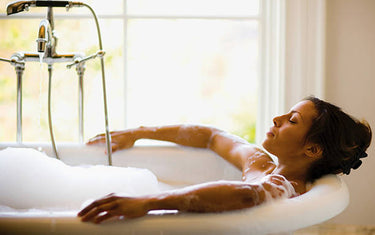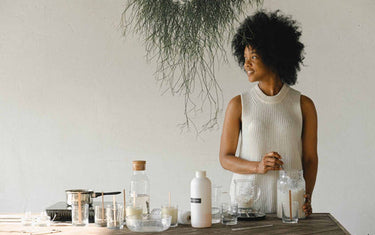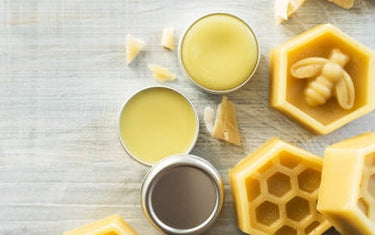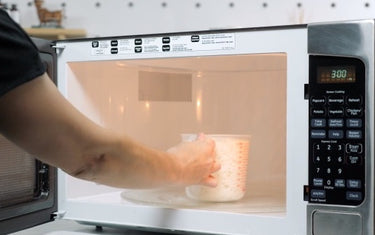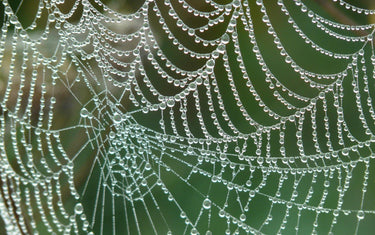5 min read / 16 July 2024 / yasmin sharp
How to Make Beard Balm
Learn how to make beard balm at home with our easy, step-by-step guide to keep your beard healthy and well-groomed.
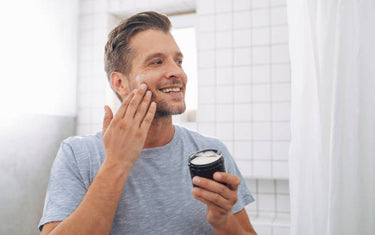
An important part of maintaining a healthy beard is ensuring you have a good grooming routine in place.
Beard balms are central to that idea, as they can nourish your skin and tame wild hairs, making it look and smell great for the day ahead.
You can learn how to make beard balm at home using a few simple ingredients and we’ve put together a simple recipe for you to follow.
What is beard balm?Beard balm is a grooming product that has been specially formulated to moisturise, condition and tame facial hair. Depending on the ingredients used to make it, a beard balm can hydrate and soften your beard to improve its overall condition. They can also be likened to moustache or beard waves, although beard balms are softer and offer better moisturising properties for the hair and skin. |

What are the benefits of beard balm?
Some of the best benefits of beard balm include:
It’s easier to style your beard
The beeswax included in the beard balm recipe provides the grip it needs to ensure your beard retains a neat and tidy shape.
Once applied it will help to tame wayward hairs and give your beard extra volume and weight.
Creates a healthier beard
Beard balms can help to condition and moisturise the skin underneath, which can reduce dryness and itching.
Carrier oils and essential oils provide a host of natural properties that also nourish the skin and support better growth of facial hair.
Protection from the elements
Your beard is exposed to all kinds of environmental factors during the day, from UV rays and strong winds, to cold temperatures and high humidity.
Applying a beard balm can create a thin layer that offers extra protection for your skin to minimise any damage caused to your beard.
Enjoy a wonderful fragrance
Applying a beard balm can not only improve the condition of your skin but also keep you smelling fantastic throughout the day.
It makes a beard feel less intimidating and more approachable, whether you are preparing for a meeting or heading out on a date.

What are the best essential oils for beard balm?
Some essential oils for beard balm you could try are:
Cedarwood oil can provide antimicrobial properties
According to the findings of one 2021 study, cedarwood oil can provide both anti-inflammatory and antibacterial properties. [1]
This can benefit the condition and health of your beard if diluted with a carrier oil and applied regularly.
Use bergamot oil to treat inflamed or damaged skin
If you need to heal small wounds or inflamed skin caused by acne around your beard, bergamot oil is a good choice.
It contains several compounds that are beneficial for skin, although it should be avoided if your skin type is more sensitive. [2]
Lavender essential oil can promote hair growth
Lavender oil is a popular option for many who want to boost facial hair growth to create a fuller looking beard.
One study found that when the oil was applied to mice, not only did it help them grow more hair, but it also grew thicker and faster than normal. [3]
Protect against hair loss with rosemary oil
Rosemary oil is often used in hair masks to support better hair growth, which may be due to the presence of carnosic acid. [4]
Other studies have also found that rosemary oil can be as effective as Rogaine, so using it in your beard balm could help you maintain a thicker beard. [5]

How to make beard balm
Before you get started with our beard balm recipe, check that you have the following to hand:
- 1 part shea butter
- 1 part beeswax
- 2 parts carrier oil of choice
- Essential oils of choice
1. Melt the beeswax and shea butter
Place the beeswax and shea butter inside a microwave-safe bowl or make your own double boiler for the cooker.
If using a microwave, heat the bowl in short bursts and stir in-between until it has completely melted. For the double boiler method, place over simmering water and continue to stir until fully melted.
2. Add the carrier oils
You can now add the carrier oils to the mixture once the shea butter and beeswax have melted together.
Remove the bowl from heat and carefully pour in your chosen carrier oil. Stir the carrier oil into the mixture to ensure they are thoroughly combined.
3. Add the essential oils
Essential oils can not only add a refreshing and pleasing scent to the beard balm, but their natural properties can also be beneficial to the skin and hair.
Follow a 2% dilution rule, which means that for very 10ml of carrier oil you add to the recipe, you should add a maximum of 5 drops of essential oil. Once added, stir thoroughly to ensure the oils are fully blended.
4. Pour into a container
Pour the finished beard balm into a heat-resistant container and leave it to cool and solidify at room temperature. It should take around 1-2 hours to set and harden.
5. Store the beard balm
Storage is important for beard balms that include essential oils, so keep it in a cool, dry place away from direct sunlight and heat sources.
Keep the lid tightly closed when not in use to minimise oxidation and if you haven’t used it in a while, carry out a texture and smell test before applying it to your beard.
How to apply beard balm
Once you are ready to use your homemade beard balm, following the steps below to get the best results:
- Use warm water to dampen your beard.
- Scoop a small amount of the balm out of the container with your fingertip and rub a small amount into the palm of your hand. This will help to warm the balm before applying it to your beard.
- Using your fingertips, slowly work the balm through your damp facial hair.
You can also use the beard balm as a deep-conditioning mask by rubbing it through your beard and leaving it for no more than a few minutes before washing it out with warm water.

Final thoughts
All you need is a little shea butter, beeswax, carrier oils and essential oils and you can whip up your own beard balm in no time at all.
Regular use will help to moisturise skin and improve the condition of your beard, so if you haven’t found a shop-bought product that works for you, making your own customised version at home can prove to be just as effective.
[1] Miroslava Kačániová et al. (2022) Chemical Composition, Antioxidant, In Vitro and In Situ Antimicrobial, Antibiofilm, and Anti-Insect Activity of Cedar atlantica Essential Oil https://www.ncbi.nlm.nih.gov/pmc/articles/PMC8839266/
[2] Simone Perna et al. (2019) Efficacy of bergamot: From anti‐inflammatory and anti‐oxidative mechanisms to clinical applications as preventive agent for cardiovascular morbidity, skin diseases, and mood alterations https://www.ncbi.nlm.nih.gov/pmc/articles/PMC6392855/
[3] Boo Hyeong Lee et al. (2016) Hair Growth-Promoting Effects of Lavender Oil in C57BL/6 Mice https://www.ncbi.nlm.nih.gov/pmc/articles/PMC4843973/
[4] Hidemi Yoshida et al. (2011) Edaravone and carnosic acid synergistically enhance the expression of nerve growth factor in human astrocytes under hypoxia/reoxygenation https://www.sciencedirect.com/science/article/abs/pii/S0168010211000022
[5] Yunes Panahi et al. (2015) Rosemary oil vs minoxidil 2% for the treatment of androgenetic alopecia: a randomized comparative trial https://pubmed.ncbi.nlm.nih.gov/25842469/

